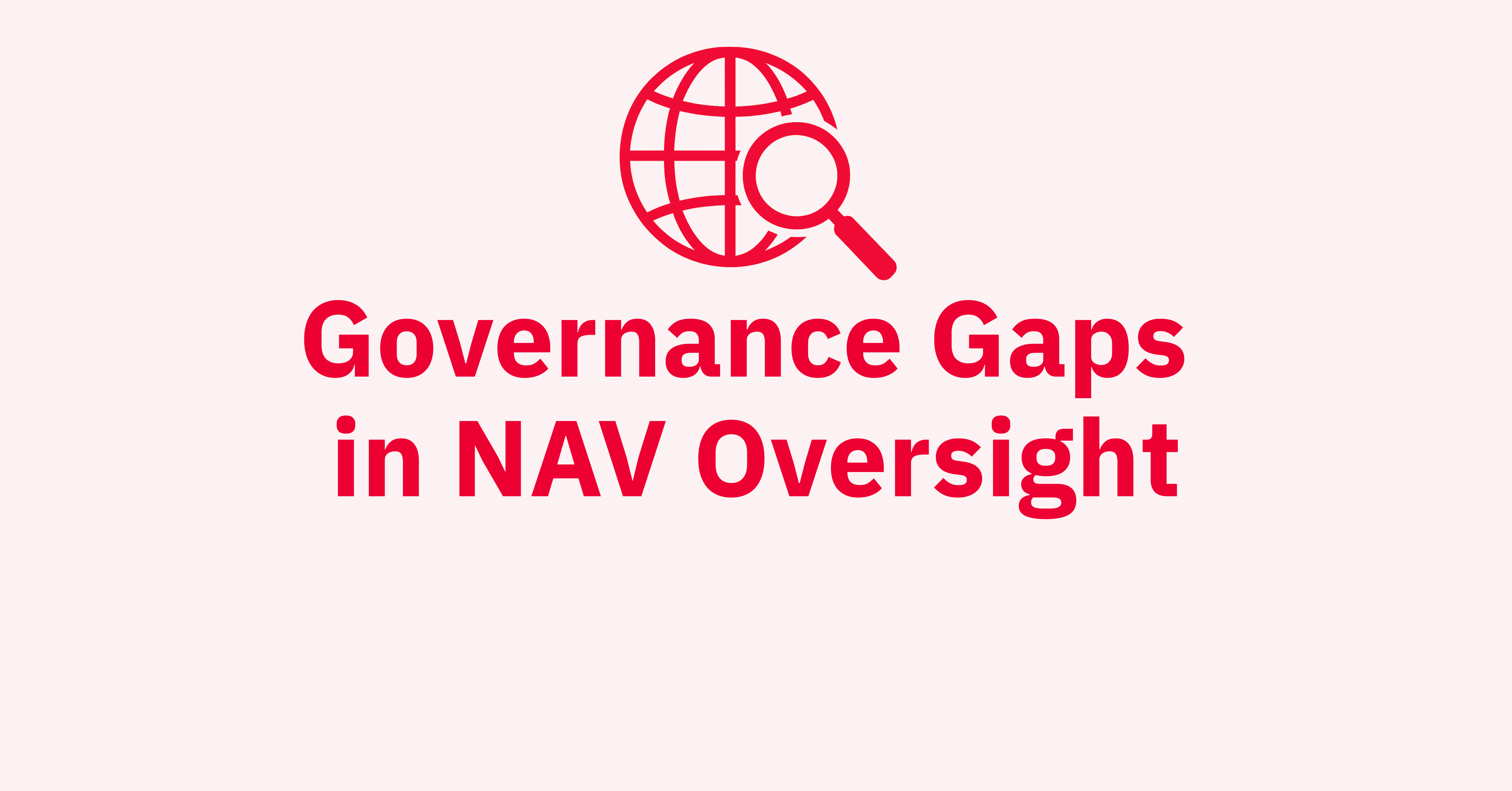Offshore NAV Oversight: How to Close the Governance Gaps ASIC Warned About

When your NAV is outsourced offshore: Governance gaps ASIC warns about, and how to plug them with modern oversight
In October 2025, ASIC issued a stark reminder to Australian financial services licensees and Responsible Entities (REs): outsourcing offshore does not relieve you of your fundamental obligations. Its review flagged significant governance weaknesses in the use of offshore service providers (OSPs), especially when critical functions are moved beyond Australia.
This is especially relevant for REs relying on third-party NAV administrators, accounting platforms, or valuation and pricing services located overseas. When your NAV function is outsourced, you still retain full responsibility, and any gap in oversight, data integration, or accountability can translate into regulatory, operational or reputational risk.
In this environment, Australian fund operators must insist on rigorous, purpose-built oversight tools, not just spreadsheets or costly bespoke fixes. That’s where Fund Recs’ NAV Oversight solution comes in.
Why ASIC’s warning matters and why the Aussie market needs robust NAV oversight
1. You can’t outsource your core obligations
ASIC was explicit that licensees and REs remain accountable for the operation of their businesses, even if functions are performed offshore. The more critical the outsourced function, the more scrutiny regulators will apply.
Many REs already outsource NAV computation, pricing, valuation, or data aggregation functions. But without strong, transparent oversight, that outsourcing becomes a point of vulnerability, whether from data latency, errors, conflicts in foreign jurisdictions, or weak controls.
2. Weak frameworks exposed in ASIC’s review
ASIC found that the quality of risk management frameworks among REs using offshore providers varied significantly, with some lacking any formal framework at all. In some cases, the chain of responsibility was unclear, and oversight was under-resourced.
Given ASIC’s intensified focus on outsourcing in its enforcement agenda, the time to be reactive has passed.
3. Regulatory and governance obligations tightening
In the funds and managed investment space, ASIC’s RG 132 (Funds management: Compliance and oversight) reinforces that REs and oversight entities must maintain rigorous control, compliance and governance over managed schemes. Across financial services more broadly, ASIC has flagged outsourcing, data security and third-party governance as rising enforcement priorities. For businesses also under APRA oversight, the forthcoming or existing CPS and CPS-231 requirements impose due diligence, monitoring, and governance obligations around material outsourcing.
In sum: the regulatory wind is blowing toward scrutiny of outsourcing. If your NAV chain is partially or wholly offshore, you can’t afford governance blind spots.
4. Complexity, risk and client expectations
Offshore NAV providers may use different systems, benchmarks, data feeds, or valuation approaches, introducing reconciliation challenges, data gaps, latency or mismatches. Without oversight, errors or inconsistencies may go unnoticed until magnified, for example in stress scenarios, audit reviews or investor queries.
Meanwhile, institutional investors increasingly demand operational transparency, accountability, and independent oversight. Being able to demonstrate a strong, auditable oversight layer can be a competitive advantage.
What Fund Recs’ NAV Oversight solution offers and how it defends your governance posture
Here is how Fund Recs helps Australian REs and fund operators de-risk their offshore NAV model, strengthen oversight, and satisfy regulator expectations:
|
Capability |
Description / benefit in this context |
|
Automated data ingestion & reconciliation |
Seamlessly pull in NAV data, pricing, cash flows, holdings from onshore and offshore administrators, reconcile differences day zero, and highlight exceptions. |
|
Exception / discrepancy tracking & workflow |
Every mismatch or anomaly is flagged, routed, investigated, and resolved within an auditable workflow. You maintain visibility and control over what your OSPs deliver. |
|
Audit trail & reporting transparency |
Full time-stamped audit logs, versioning, commentary, and reporting to evidence oversight to internal and external parties such as internal audit, regulators, and investors. |
|
Scenario stress testing & 'what-if' checks |
Validate NAV outcomes under shocks, test sensitivity, and compare multiple valuation paths, helping detect structural weaknesses before they become material. |
|
Governance dashboards & KPIs |
High-level dashboards showing OSP performance against SLAs, error rates, timeliness, variance metrics, and exceptions aged over thresholds. |
|
Integration with asset register / cash / compliance modules |
Because NAV oversight is closely connected to other fund control processes, Fund Recs’ platform links cash flows, assets, and compliance checks to provide a holistic view of oversight. |
|
Configurable control policies & rules engine |
Deploy rules specific to your jurisdiction or fund structure, such as currency thresholds or valuation tolerances, so oversight reflects your internal risk appetite. |
|
Modular design & scalability |
You can start oversight in stages, such as pricing and hold reconciliation, and scale to full coverage as maturity grows, without massive upfront cost or custom builds. |
If you'd like to speak to us about our NAV Oversight solution, contact us here.



